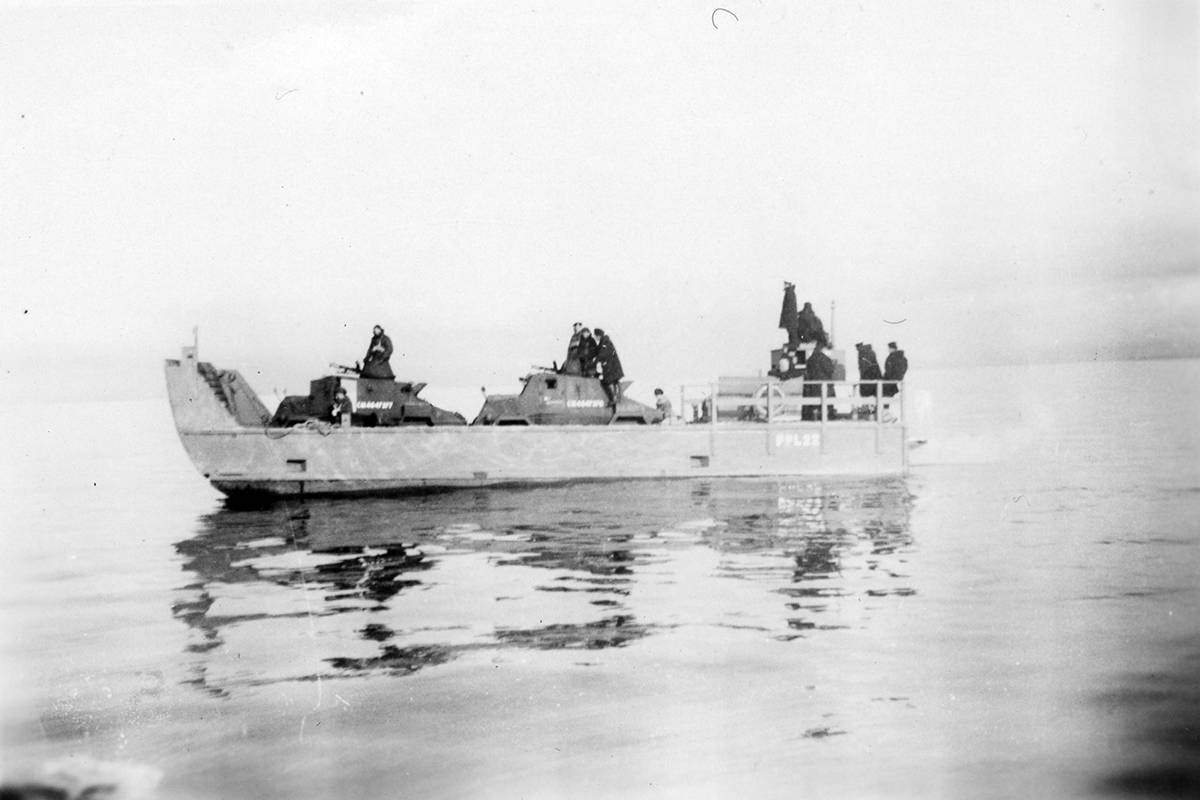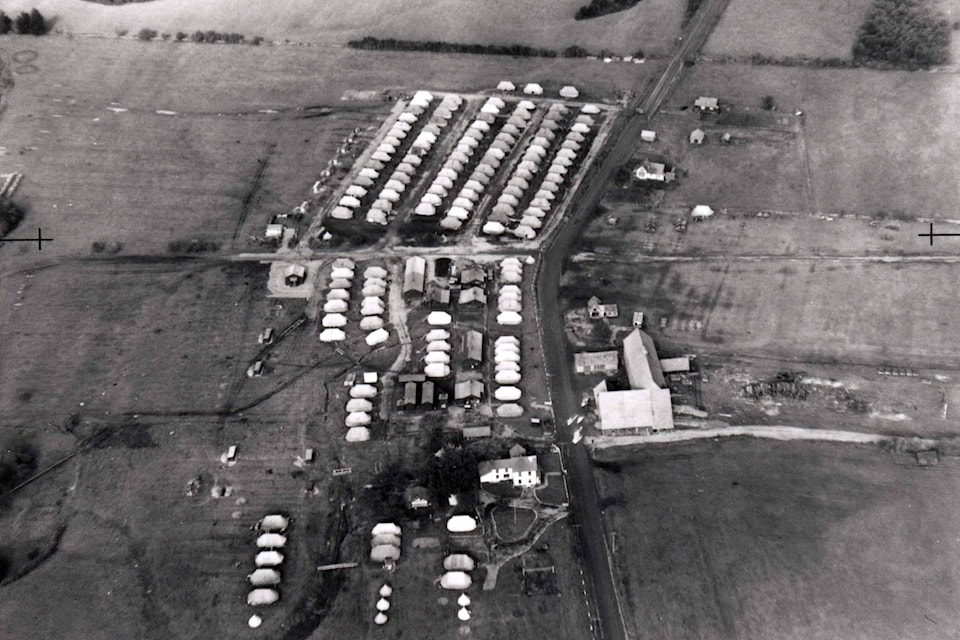Judy Hagen
Special to The Record
The Comox Valley had an interesting connection to the D-Day operation.
When 21,000 Canadian troops descended upon Juno Beach on June 6, 1944, it was the culmination of years of preparation. Many of the assault teams had been trained under the “Combined Ops” program; one training site was Courtenay. Many lessons had been learnt at the ill-fated Raid on Dieppe in August 1942. It was hoped that the “Combined Ops” training would better prepare the men for landing at Juno Beach on D-Day.
The original training began as part of the “defence of the Pacific Coast.”
After the Dec. 7, 1941 attack on Pearl Harbour, a “Combined Ops” organization with both the navy and army was set up to defend Canada in the event of a Japanese invasion of our western shores. The plan called for the army to build 100 mechanized wooden landing craft, which would be manned by the navy. The landing craft would be located at key positions along the coast from Alaska to Washington State.
As early as July 1942, men volunteered for the “Fisherman’s Reserve” and were given basic naval training for “landing craft” duty only. The training started at William’s Head near Esquimalt. The army began training in the fall. When the operation was forced to vacate this site, they were moved to Courtenay with the army setting up a tent camp on the old Piercy farm (the present site of the Exhibition Grounds and G.P. Vanier School) while the navy erected barracks in Lewis Park between what is now the CRA Hall and the Memorial Pool.
About the time the new site had become fully functional it was realized that the threat of a Japanese invasion no longer existed. When the focus of training shifted towards another assault on continental Europe, Courtenay became one of several training sites in Canada.
The assault craft were moored at the Courtenay Slough across the Old Island Highway from the naval barracks and within marching distance from the army camp on Headquarters Road.
At the same time as the Combined Ops training began, “the spit” was renamed HMCS Naden (III) and extension of the training being done at HMCS Naden (II) in Victoria.
When the Combined Ops training became the primary activity at the spit, it was commissioned as HMCS Givenchy (III) - on Oct. 1, 1943. Two months earlier, a fine new 140-foot drill shed had been completed, which provided greatly improved training facilities much appreciated by the men during the wet weather.
While they were stationed at Courtenay, the Infantry Battalion and combat teams of the Canadian Army would have a four-week training session.
Typical training carried out by the Combined Ops was described in a report of the Midland Regiment, which was at Givenchy III in August 1944.
“Three assault craft exercised ‘C’ Company in boat drill, six craft exercised Support and Headquarters Companies as well as ‘A’ Company in boat drill and landing net procedure; three craft drilled in ‘D’ Company in landing on Goose Spit, four companies in nine craft practised landings on Sandy Isle, five cutters were employed teaching soldiers boat pulling.”
For nearly three years, the little landing craft zipped around Comox Harbour and the surrounding islands. Army and navy personnel became “family” to many households in the community because many boarded with local families. Many of these boarders became life friends.
Two men who trained here as part of the Combined Ops would, after the war, serve as mayors of the City of Courtenay.
William (Bill) Moore, who had grown up in Courtenay, enlisted in the Fisherman’s Reserve. He was seconded to the British Navy to train the British Army for the beach assault. He took part in the landing on D-Day and was discharged, returning home in the fall of 1944 because his mission was accomplished.
George Hobson of Edmonton enlisted in the Navy and was sent to Givenchy II. He participated in the assault landings in North Africa, Sicily and Italy. After the Mediterranean Campaign, his unit returned to the spit to assist in gunnery training for the Pacific Theatre.
In 1945, the army camp closed. Givenchy III continued to provide assault training for the British naval ships. In April and May of 1945, the anti-aircraft cruiser, HMS Prince Robert, was prepared for duty in the Pacific. When the Second World War ended, Givenchy III was closed. “The Mission was accomplished.”
The navy barracks were for a short time used as primary classrooms until Courtenay West School was opened. The army barracks were still in use at GP Vanier High School as maintenance buildings, as recently as 2010.
In May 2004, the Heritage Commission of the City of Courtenay recognized the historical significance of the Combined Ops training by unveiling a plaque at Simms Millennium Park, near the Courtenay Slough.

